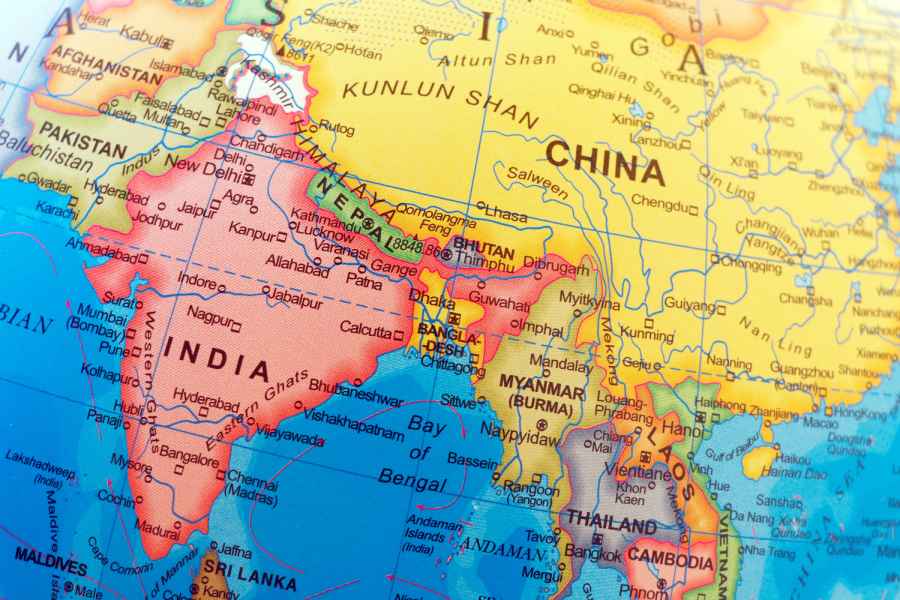On the southern slopes of the Himalayas are poor villagers with few facilities; the north is in the occupation of stern imperialists. And the people who confront each other across the mountain range, Indians and Chinese, are sybarites who prefer watching adventures on television from a sofa to indulging in them.
The Alps, on the other hand, are surrounded by people who are happy with their prosperity and keen to go off to seashores and mountains when they have the time. Amongst them were Helmut and Erika Simon from Nürnberg in Bavaria. Helmut had retired as caretaker in the Nürnberg city library. Both were Alpinists: they climbed mountains for fun.
Thursday, September 19, 1991 was a lovely sunny day. They climbed a peak near Tisenjoch in Austria, and coming down, strayed off track while looking for a shorter way back. Then, approximately at a height of 10,000 feet, they came across what looked like a corpse. (Two other people also claimed to have found it — Magdalena Jarc, a Slovenian actress, and Sandra Nemeth, a Swiss. Magdalena said she had found the corpse, that she went to the shelter, met Helmut there and asked him to come and take photos. Sandra claimed that she was the first to discover the corpse. She called her parents who had walked ahead of her, but they did not hear her. Then, suddenly, Helmut turned up. She was quite annoyed. She claimed that she spat on the corpse to establish her ownership. At that moment, the corpse was just a corpse; Sandra had no way of knowing that it was something out of the ordinary. Anyway, she got nothing.) The corpse turned out to be that of a man. It survived because he fell in a gully full of snow and ice and was soon frozen and covered with ice. “Look! That looks like a human being,” said Erika to Helmut, who took a photo.
In the Alps, there are shelters on the way to peaks where people can wait if the weather is bad. Helmut and Erika went down to the nearest shelter and reported their find to its keeper. The corpse was taken to Innsbrück, and examined by scientists; four days later, Konrad Spindler, professor of ancient history in Innsbrück University, declared that the corpse was 4,000 years old. Eventually, it was discovered to be a 5,300 years old male. He had to be called something. Just below the range where the Simons found it was the valley of the Ötz river. So he was called Ötzi.
It was best to avoid calling his body a corpse because of its negative associations in human minds; so it was called a mummy. It was 154 centimetres long, from which scientists calculated he must have been 160 cm — 5 feet 3 inches — tall. His shoe size was 38, which would be normal for a human of the 21st century. He weighed 13 kilogrammes, because his blood had drained out. Full-blooded, he must have weighed about 50 kgs — nice and slim. He was unshaven, and had dark, flowing hair. He had broken his nose, and some of his ribs; he must have been in a lot of fights and survived. He had also hunted a lot of animals, roasted them on wood fires and eaten them; his lungs were covered with soot. He had plenty of charcoal from the fires he used to warm and feed himself; he ground it into a powder and rubbed it into tiny holes he made in his skin with thorns. He had 61 such tattoos, mainly in straight lines. They were not decorations; they were in places where he would have suffered pain. So scientists think they were an ancient form of acupuncture, centuries before the Chinese developed it.
From the bearskin hat to shoes, Ötzi was extremely well-dressed. His socks, made of grass, were comfortable. The shoes, made of deerskin, bearskin and tree bark, were waterproof; they were so good that Bata thought for a while of selling reproductions. His coat, leggings and loincloth were made of sheepskin or goatskin. The shoelace was made of cow leather, and the quiver of deerskin. He carried a copper axe with a yew handle, a flint knife with an ash handle, and a quiver of 14 arrows with viburnum and dogwood shafts, not to mention berries, birch bark baskets and mushrooms.
He had eaten ibex meat just a couple of hours before he died. Earlier he had eaten meat of chamois and red deer and bread of einkorn wheat as well as fruit and vegetables. He was carrying a copper-bladed axe, and had copper particles and arsenic in his hair. So it is possible that he had been mining or smelting copper.
Ten years after Ötzi was found, X-ray and CT scans were done on his body. It was then discovered that he had an arrowhead in his left shoulder. The arrowhead had blood of two other people on it — apparently copper was valuable, and it was the practice to remove arrowheads from victims and reuse them — and his knife and his coat had the blood of two more. He had been hit on his head, and was bruised all over the chest and arms. Obviously he had been badly injured in a fight.
There was controversy on whether Ötzi was Austrian or Italian. The South Tyrol province of Italy claimed he was found in its territory. After meticulous measurement, it was decided that he was lying 92 metres inside Italian territory. So he was taken out of Innsbrück Museum in Austria and housed in the South Tyrol Museum of Archaeology in Bolzano, Italy. He is kept in an air-conditioned sarcophagus cooled to -6.12 degrees centigrade with 99.42 per cent humidity.
Throngs came to see Ötzi; the museum sold lots of tickets, published picture books, organized events and made money. So did hotels, restaurants and shops in Bolzano. The Simons felt that they deserved a part of the booty. The museum did not agree, and there was a legal contest. Helmut went climbing in Austrian Alps in 2004 and disappeared; his corpse was found a week later. He probably stumbled and crashed down to his death.
Under Italian law, the Simons were entitled to a quarter of the value of Ötzi. The question was, what was his value? The government of South Tyrol offered them 10,000,000 lire, roughly equal to 5,000 euros, in 1994. They thought that was ridiculous; in 2003, they filed a case in Bolzano for recovering $300,000 from South Tyrol. The case went all the way up to Corte Suprema de Cassazione in Rome. Finally in 2008, Erika settled for 150,000 euros.
Bolzano is a beautiful city on the slopes of the Alps, with great views of the mountains and centuries-old churches and palaces. It is bilingual — Italian and German — and the rights of the German-speaking minority are protected by law, a model that Dalai Lama went and studied to see if it could be applied to Tibet under Chinese occupation. I spent one autumn sitting in the foothills of Bolzano and reading. It is worth a visit, not least because of Ötzi.











